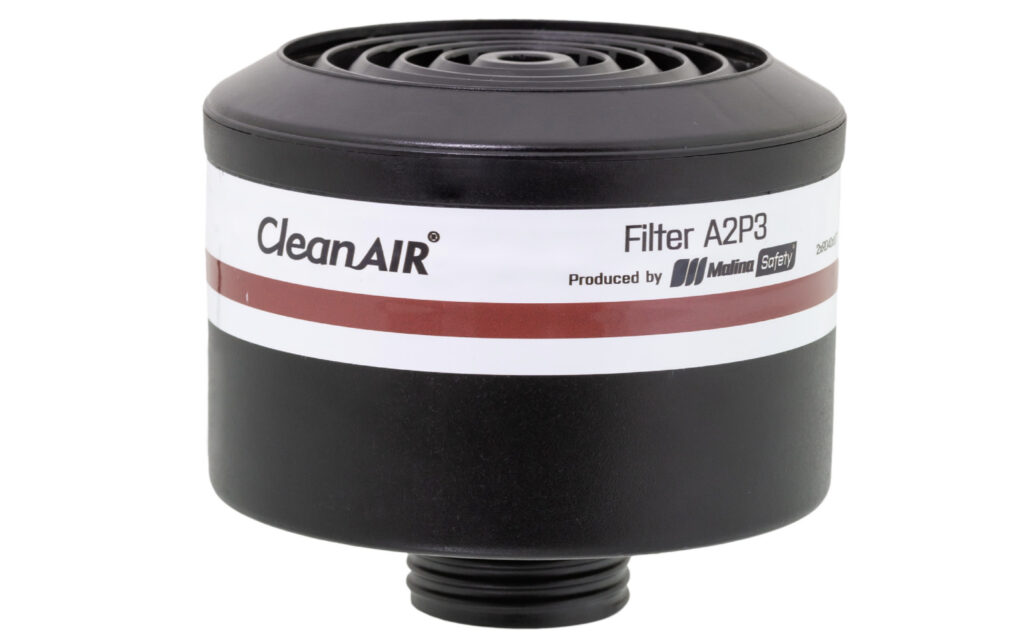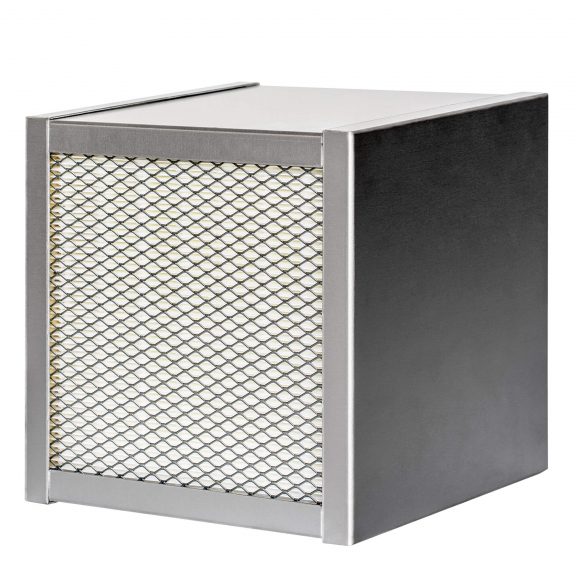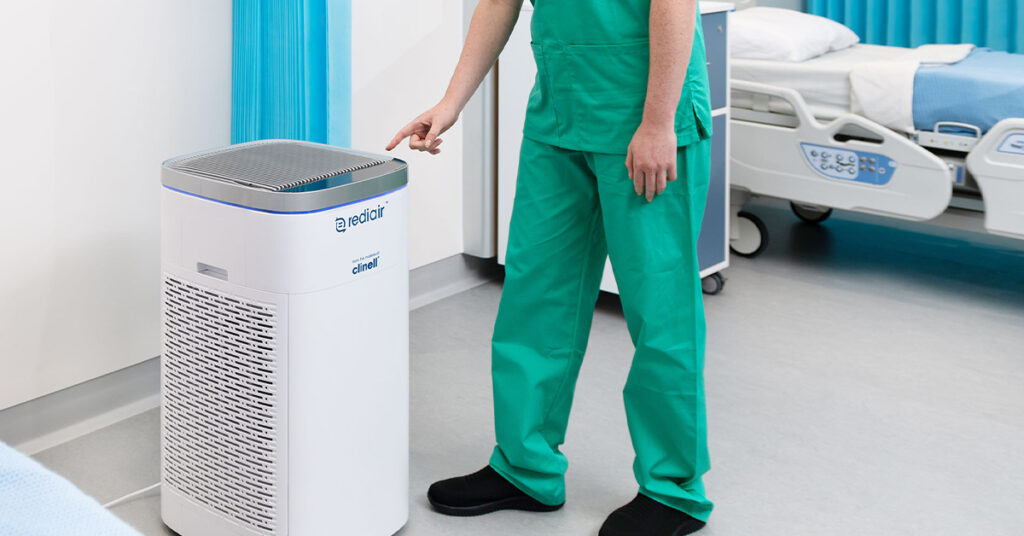Air filters against Covid-19 – comparison between A2P3 and HEPA
Since the outbreak of the pandemic due to the SARS-CoV-2 virus, air filters have been gaining much attention both in the media and among medical experts as well as health care workers. Air filters are known to reduce the airborne presence of viruses, bacteria, and other particles of various types and sizes, but understanding of usage areas, specifications, as well as limitations of a specific filter is of great importance.
It is well known that even under the strict guidance of protection protocols, it is impossible to always protect individuals, most of all healthcare workers, from contagion. Even with these guidelines provided by the CDC, WHO or similar organisations, the risk is still present in locations with airborne viral particles.
Given the fact that the Personal Protective Equipment (PPE) on which healthcare workers heavily rely on, is not 100% effective due to gaps and breakage. The reduction of these particles by collection in the air filters should reduce the probability that even careful individuals become infected.
See here how to protect the healthcare professionals.
FILTER CLASSIFICATIONS
When trying to clarify the types of filters on the market, one must be aware of the different classifications by different standards in a given location. When manufacturing a filter for a specific use, whether for commercial or medical use, every manufacturer is obliged to attain a certain filter certification based on their location and usage.
In accordance with European Standards EN 14387 and ISO 29463, every filter is assigned to a different filter class depending on the efficiency of capturing the most penetrating particle size (MPPS) which represents particle size of 0.3 micrometers. MPPS is the particle size which is the most difficult to capture.
The most common types of filters are the ones used in the field of ventilation, air-conditioning, construction and technological processes, mostly for commercial usage. Those filters belong to classes issued by the European Standards as Efficient Particulate Air (EPA), High Efficiency Particulate Air (HEPA) and Ultra Low Penetration Air (ULPA).
On the other hand, in the context of personal protective and medical equipment the European Standards and the US system for Occupational Safety and Health (NIOSH) provide different classifications, depending as well on the efficiency of capturing the MPSS particles.
The European Standard specifies the minimum requirements for use as a part of a respiratory device, and it divides filters to particle filters, gas filters and combined filters.

Particle filters catch a wide range of solid particles in the form of liquid and solid aerosols such as dust, smoke, fibres, bacteria, viruses and radioactive particles. They are further divided into three classes of filters – P1, P2 and P3 depending on filter efficiency.
On the other hand, gas filters give protection from certain gases and vapours, while combined filters will do the same with the addition of protection from solid and liquid particles. Depending on their quality, applications and protection capacity, these filters are divided into several classes, each denoted by a certain letter – A, B, E, and K.
Each of these class types is further classified in three classes relating to filter absorption capacity – Class 1, Class 2 and Class 3. It is important to mention when a filters’ code has many characters, like A2P3, that code refers to a combined filter which provides protection against a combination of contaminants in the form of gases, vapours and solid particles.
To know more on filters, contact us here.
A2P3 SPECIFICATIONS
As mentioned, A2P3 is the code for combination filter which includes protection from both gas and particles followed by high filtering efficiency of 99,95%. This percentage represents the efficiency of capturing the most penetrating particle size (MPPS) mentioned earlier.
Letters „A“ and „P“ represent a filter feature which means that it can be used in the presence of organic gases and vapours, dust and toxic particulates and solid or liquid aerosols, with a boiling point above 65 degrees. Additionally, Number 2 stands for filter group „Class 2 gas filter“ with medium filter capacity, whereas number 3 stands for „Class 3 particles filter“ with high efficiency.
A2P3 USAGE AREAS
A2P3 filter is subject to the European Standard that specifies the minimum requirements for filters to be used as components of protective respiratory devices. It can be found as part of personal protective equipment, including face masks that are used as part of a respiratory device, or any full face mask that includes a respiratory filter.
The filter usage is ranging from surgical masks to filtering facepiece respirators to powered air-purifying respirators, therefore, it is routinely used in a medical environment being available to healthcare workers, where the need of protection from infectious or toxic inhalation is crucial i.e. surgery rooms, intensive care units (ICUs) and isolation pods.
Other areas where it can be found as part of a respiratory device are construction sites, locations where the paintwork is being performed, as well as metal or woodwork and in powerplants.

HEPA SPECIFICATIONS
HEPA filters are manufactured filters used primarily to retain small particles while allowing the air to pass through. That includes bacterial, fungal particles and other opportunistic microbiological organisms. They are usually made of microfiber glass or some other fibrous media and every filter is composed of multiple layers of randomly arranged fibres designed to intercept passing particles using one of three mechanisms of filtration: impaction, interception and diffusion.
As the air flows through the fibres each type of mechanism is in charge of traping and stopping the specific particles, for instance, particles bigger than 1 micrometer are mostly influenced by impaction and interception, whereas diffusion is the dominant mechanism for trapping particles smaller than 0.1 micrometers. However, particles between 0.1 and 1 micrometers are under the impact of all three methods of capture to a lesser degree than those smaller or larger, which leads to lower efficiency of filtration.
HEPA USAGE AREAS
HEPA filters are the primary filtration system used in electronic cleanroom assembly, pharmaceutical processes, hospital surgery rooms, bioengineering and any other applications where the reduction or removal of small particles is needed, where the airborne infectious agents may be present.
Filters are also deployed extensively in non-healthcare environments such as the construction areas, housing air-conditioning, passenger aircrafts, biosafety cabinets in laboratories, and in applications that require contamination control, such as the manufacturing of disk drives, medical devices, semiconductors, nuclear, food and pharmaceutical products.
However, the filters can also be found inside vacuum cleaners, refrigerators, included inside high-speed electric hand dryer, and incorporated inside masks and respirators.

HOW AIR FILTERS PROTECT HEALTHCARE WORKERS?
Increased spread of SARS-CoV-2 causing coronavirus disease infections worldwide brought increased attention of the scientific community to the prevention and control of the infection.
Numerous scientific research and experiments have been performed since the first Covid outbreak in Wuhan, and the eyes of the general public, as well as the government, have been aimed towards the healthcare professionals and medical experts to provide a solution and to figure out a way of stopping the spread.
The health care workers seem to be particularly at risk given the high incidence of infection that can be caused when providing care and treatments to the patients. Increased viral load in their environment when treating the patients who release the viral particles as aerosols may be one of the major causes of risk to healthcare workers.
As mentioned, one type of effective medical solution that reduces the possibility of spreading the viral particles are air filters placed in areas with possible airborne infectious agents. Air filters incorporated inside air purifiers, and placed in rooms near the infected patient may significantly reduce the virus load in the environment. The filters are already extensively used in ICUs, operating rooms and medical isolation units, and their effectiveness is well documented.
THE MAIN QUESTION
Are the A2P3 and HEPA filters capable of blocking particles as small as a virus, and more specifically, the Covid-19 virus?
Substantial research has taken place in the recent year to try to revel pathogen exchange pathways and mechanisms that could lend insights into potential methods to stop the spread of the virus. Current policies for infection control are based on the premise that most respiratory infections are transmitted by large respiratory droplets – larger than 5 micrometres, and produced by coughing and sneezing.
In the case of Covid-19, virus size is estimated to be between 0.12 and 0.16 micrometers but fortunately, viruses are usually combined with larger particles such as respiratory droplets, which are the main mechanism of human to human transmission, according to the World Health Organisation.
These particles are ranging from 1 to 5 micrometers in size, therefore it indicates that both A2P3 and HEPA filters are capable of trapping the droplets of respiratory infections that viruses have attached to and prevent them from remaining in the patients’ area.
However, it is important to emphasise that direct studies for SARS-CoV-2 and it’s effects on HEPA air filters have not been performed yet. Recommendations from the CDC for the use of portable HEPA purifiers for decontamination of SARS-CoV-2 in clinical areas or procedure rooms have not been provided. CDC guidance for SARS-CoV-1 suggests theoretical efficacy of HEPA filters to remove airborne SARS-CoV-2, but there are no formal recommendations as further studies need to be conducted.
On the other hand, A2P3 filters have been widely used in the medical field providing efficient protection when it comes to toxic and viral environments. They are placed in the high aerosol-generating zones like procedure rooms, ICUs and isolation units, therefore, installation of A2P3 filters in a multitude of respiratory protective devices indicates the filters’ great efficiency.
To conclude, depending on the area which needs to be air filtered and based on the location of usage i.e. the operating room, ICU, public toilet or hospital room, with attention on the particle size that needs to be contained, the use of both A2P3 and HEPA filters is possible.
Clinical experts at EpiGuard conducted hours of research to provide a state-of-the-art medical device the EpiShuttle, safe for both the patient and the healthcare worker. However, the crucial first-hand experience in providing safe treatment and transportation of patients with infectious diseases such as Ebola, SARS, MERS, Monkeypox and Coronavirus has resulted with the installation of A2P3 filters inside the EpiShuttle as sufficient and proven protection against Covid-like viruses.
Have any questions?
DISCLAIMER: The medical device information is provided for general informational and educational purposes only and is not a substitute for professional advice. Accordingly, before taking any actions based upon such information, we encourage you to consult with the appropriate professionals. The use or reliance of any information contained on the site is solely at your own risk. The EpiShuttle does not protect against all types of CBRN occurrences. Accordingly please consult with medical professionals before usage.